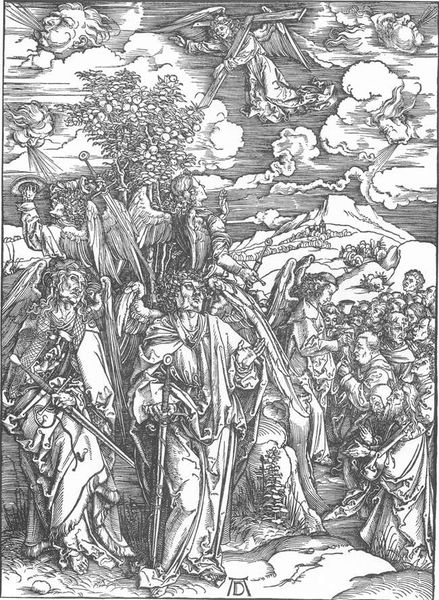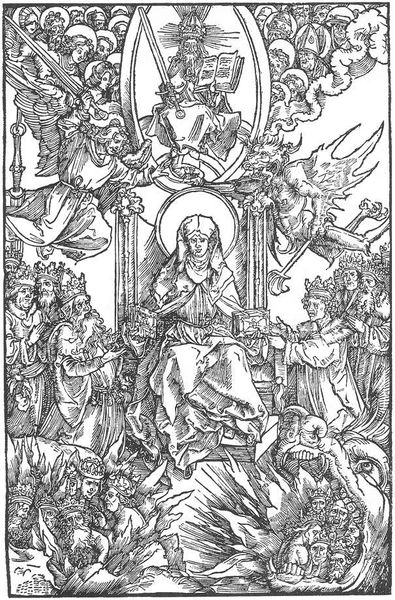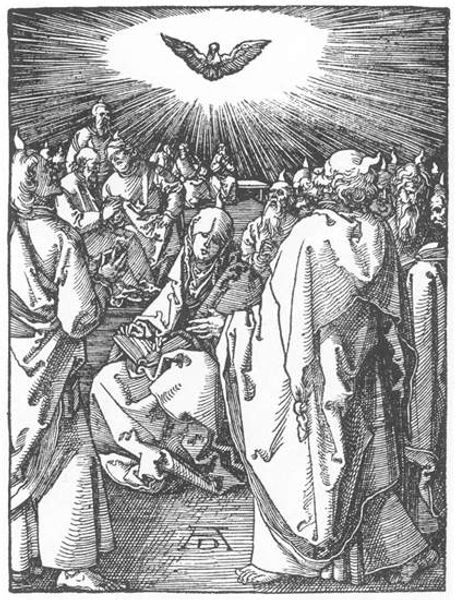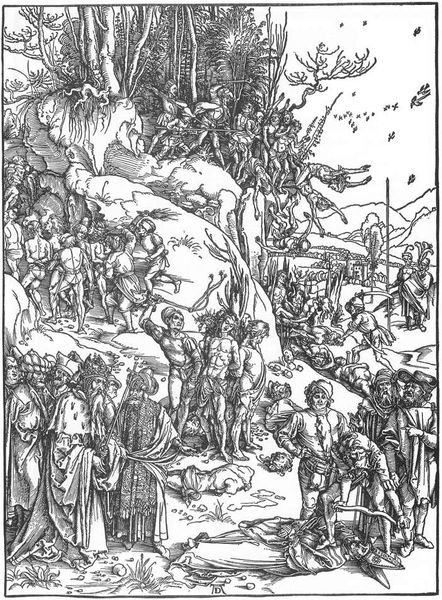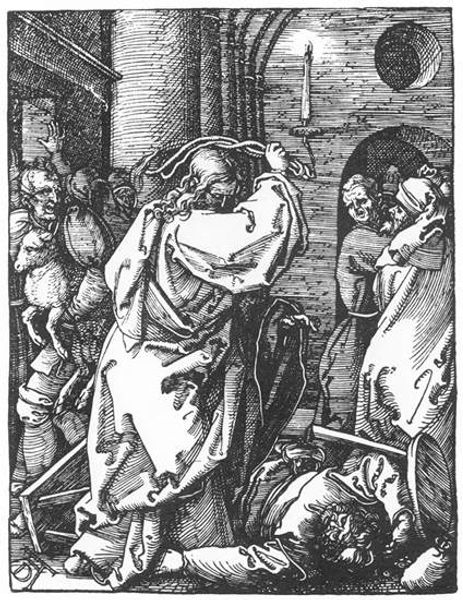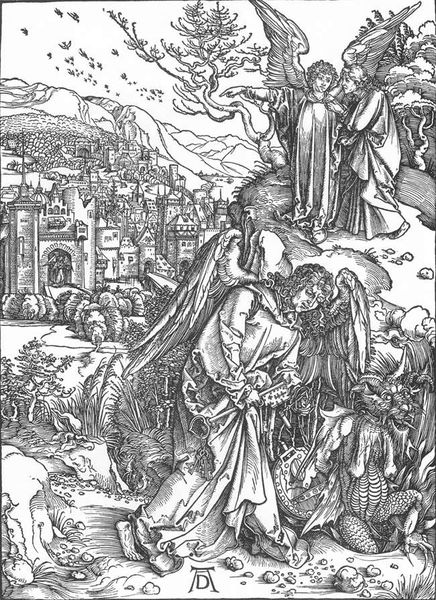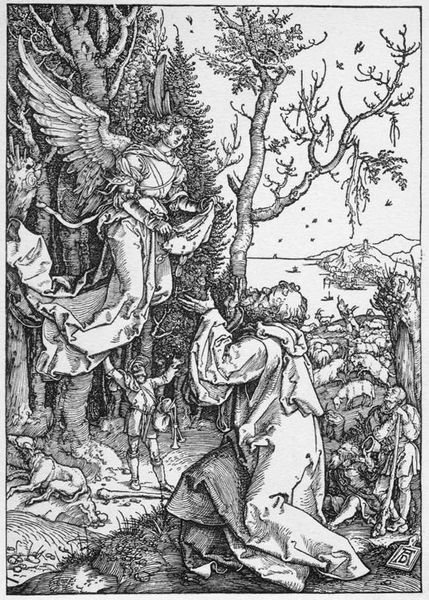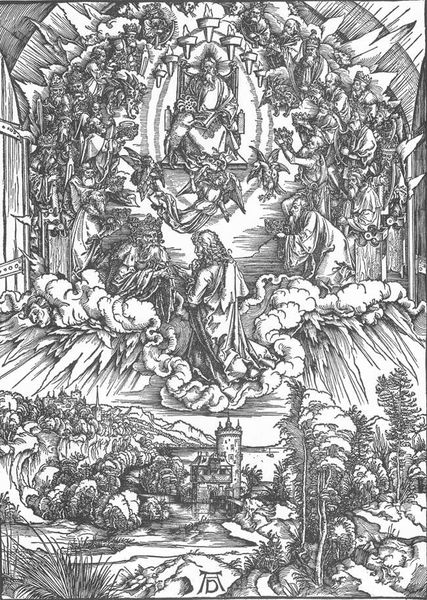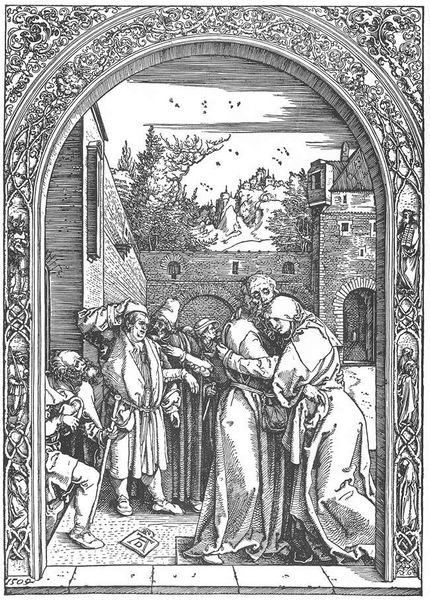
drawing, print, woodcut, engraving
#
drawing
# print
#
pen illustration
#
figuration
#
woodcut
#
line
#
history-painting
#
northern-renaissance
#
engraving
Copyright: Public domain
Editor: We are looking at "The Ascension," a woodcut print created by Albrecht Dürer in 1511. I'm struck by the almost frantic energy in this piece. All those upturned faces—it feels like a moment of intense emotional upheaval. What symbols do you see at play here? Curator: The ascension itself, depicted in fragments at the top, is an extremely potent symbol of hope, transformation, and the divine breaking into the human sphere. Below, notice how the apostles are arranged; some kneel in reverence, others gesticulate wildly. Consider this a visual vocabulary reflecting the multifaceted human experience of faith, where doubt and understanding coexist. How do these diverse reactions resonate with our collective understanding of the divine today? Editor: So the differing reactions amongst the apostles aren’t just realistic portraiture; they communicate different relationships with faith. But why are some missing? Curator: A keen observation! That visual absence holds meaning too. Traditionally, only eleven apostles were present; Judas Iscariot wasn't, and some traditions say Thomas was absent as well. Their absence acts as another symbol within a larger story—hinting at the complexities of betrayal, doubt, and ultimately, human fallibility within the grand narrative of the divine. And it asks us to confront difficult aspects of belief. What kind of emotional impact does this artistic decision produce for a viewer now? Editor: That’s fascinating! I hadn't considered the absent figures to be symbolically important, too. The whole print feels so much more layered now, the lines giving weight to the symbols within the art. Curator: Indeed, Durer uses that linework not just to depict but also to suggest the weighty implications of this transformative event, which holds deep resonance within cultural memory. Considering the art, and even our responses, what kind of responsibility accompanies belief? Editor: Thinking about responsibility makes you look inward. It is truly a stunning piece. Thanks for clarifying these intriguing elements, giving a newer way of seeing the artwork.
Comments
No comments
Be the first to comment and join the conversation on the ultimate creative platform.


